Lenovo ThinkCentre M720q Tiny Performance Testing
The Lenovo ThinkCentre M720q Tiny is meant as a business desktop scenario, not for tasks like being the main systems for heavy CAD work, video editing, deep learning research, or similar applications. Instead, it is meant to excel in Microsoft Excel. The platform is more than capable in that respect, but we wanted to see how the review configuration performed.
AIDA64 Memory Test
AIDA64 memory bandwidth benchmarks (Memory Read, Memory Write, and Memory Copy) measure the maximum achievable memory data transfer bandwidth.
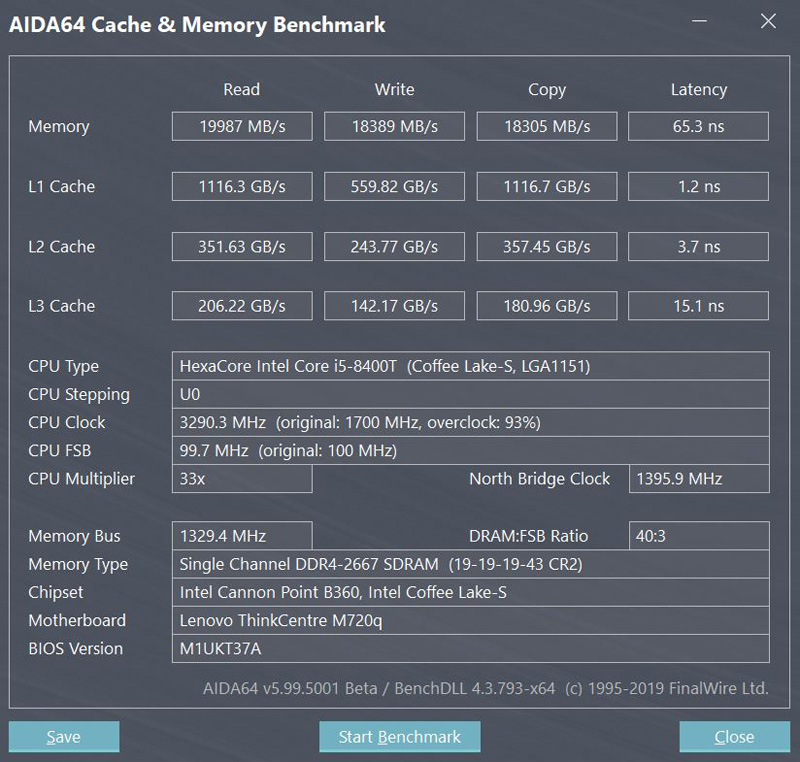
With only one 8GB SODIMM installed in the Lenovo ThinkCentre M720q Tiny performance here is limited. This due to the single channel memory configuration. We would expect to see double these numbers if a second SODIMM installed. That is simply due to the configuration we are testing, but it is something that those buying systems should consider when researching a purchase on the Lenovo configuration tool.
Cinebench R15
If you are doing heavy 3D modeling and rendering, the Lenovo ThinkCentre M720q Tiny is probably not the best fit. On the other hand, Cinebench R15 is a widely used benchmark that shows performance across a number of areas.
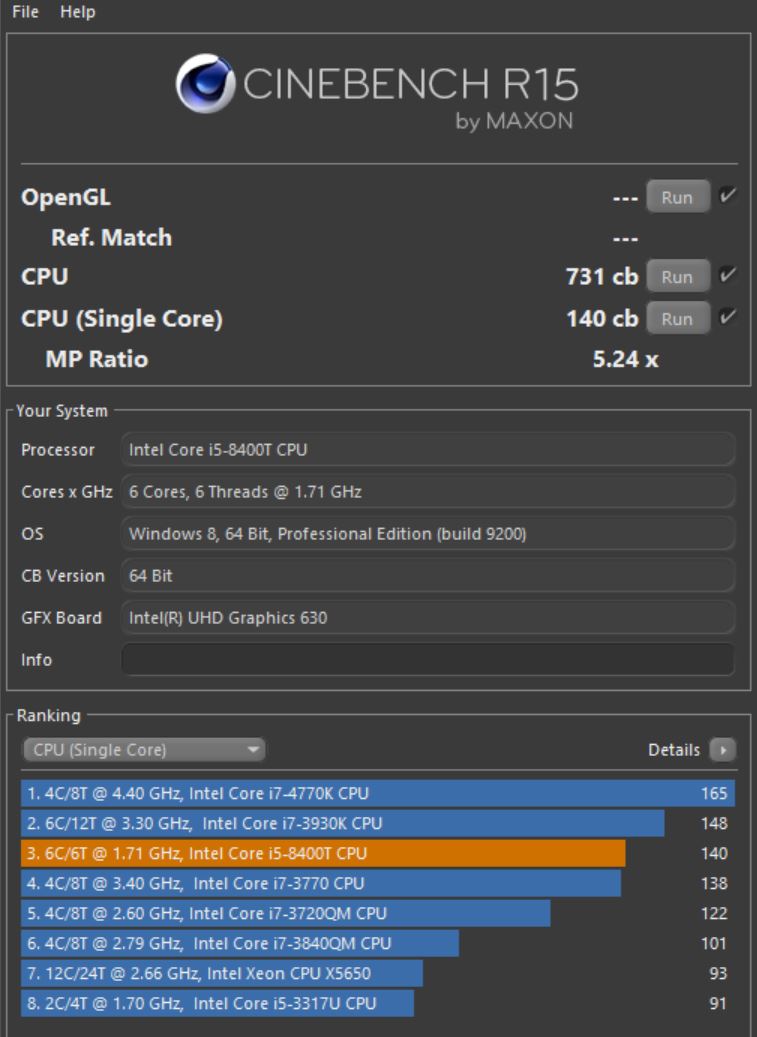
With Cinebench R15 we see the fairly good single and multi-thread performance even from this small form factor.
Geekbench 4
Each Geekbench 4 CPU workload models a real-world task or application, ensuring meaningful results. These tests are complex, avoiding simple problems with straightforward memory-access patterns, and push the limits of your system.
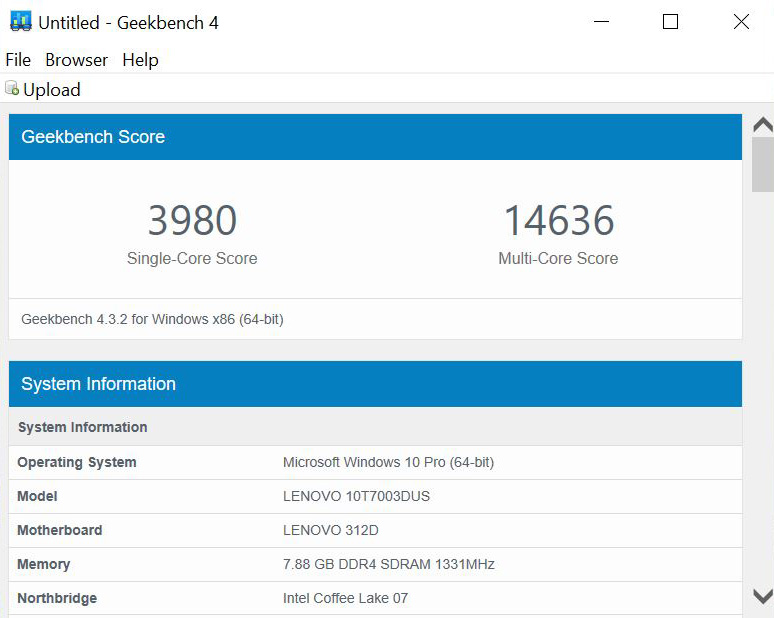
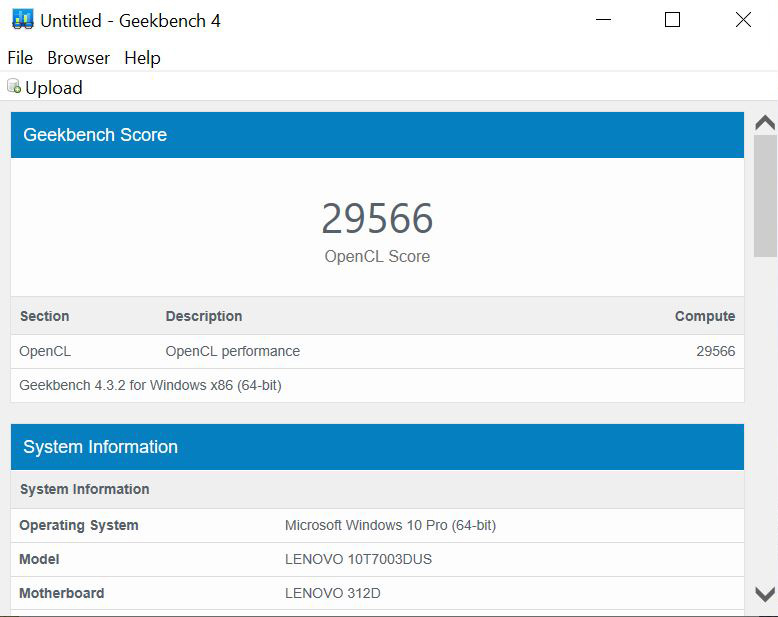
Our Geekbench 4 scores show strong results for the processor. The Intel HD Graphics 630 cannot run CUDA and generates a low OpenCL score. In future generations, Intel is focusing on improving its GPU performance. For office work, this is all you need and is the same integrated GPU powering many notebooks today.
Passmark 9.0
Passmark 9.0 is another benchmark that tests the entire system and generates a PassMark rating.
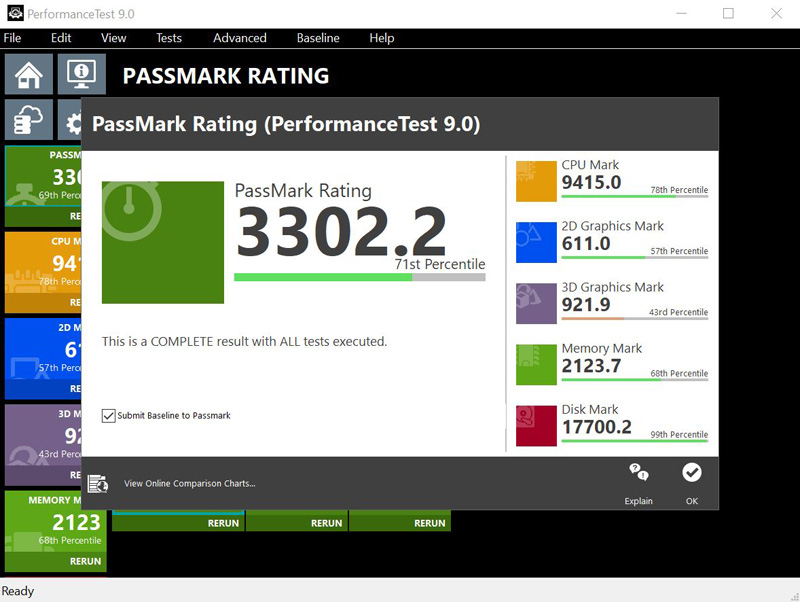
While the Intel Core i5-8400T shows very good CPU Marks the Intel HD Graphics 630 holds back graphics performance. At the same time, this is exactly where we would expect this configuration to land.
Next, we are going to look at the boot time and then give our final thoughts on the Lenovo ThinkCentre M720q Tiny.




What’s the size and weight of the power brick?
It’d be interesting to see if there’d be performance improvements here over Intel NUCs in this use case. Chick-fil-A has a slick deployment setup with Kubernetes K8s.
https://medium.com/@cfatechblog/bare-metal-k8s-clustering-at-chick-fil-a-scale-7b0607bd3541
My experience with these super small form factors is heat. Often, the CPUs have a hard time getting cooled by the small squirrel fans. However, it’s often not the CPU that dies of the heat, but the components on the board next to them which experience the same heat-soak and often aren’t rated for such high prolonged temps. The fans don’t circulate air within the case, and having the memory and NVMe on the complete other side might cause additional issues as those are often high temp components (Maybe some thermal pads to the metal chassis to act as a heatsink would help there).
I would love to see more details about the PCI Express card slot and wether the required rise
card is included and if all kind of 10Gbps nics work with it..
TERRIBLE TERRIBLE TERRIBLE! I would NOT buy today! FAN makes HUGE NOISE!
This is clearly a LENOVO sponsored REVIEW! The FAN on these tiny lenovo machines SPIN UP like crazy as soon as there is any “real” activity. LOUDER than a VACUUM CLEANER!!!
AVOID at all costs!
Also, the FAN design differences across all generations (WHY LENOVO??? TO SELL stupid hardware? You add a little bit of plastic here and there just to avoid the FANS being compatible across generations? Com’on!!!)
My experience of noise is in line with the review, it is very quiet even when under load. Marco, your unit must be defective.
I have bought an M720Q, sourced the riser and backplate from China, and installed a generic 4 port Intel NIC from eBay. You can read about the build and see the photos on the Small Form Factor website forums. It is operating as an OPNSense router (run on top of Proxmox) and handles a 500Mbit connection with all features turned on just fine on 2 cores out of the six available. I also have a M75-1q Tiny which is running about 30 containers, and a M93 Tiny which I’ve received but not yet set up.
They’re superb little boxes.
Marco, I have a M720Q for 4 weeks now.
Great performance, no sound at all.
I am working in a very silent place, but even then : no noise.
would the fan/heatsink blower in these (with the lenovo poorly cheaply done YAY lets just use 1 heat pipe when they could of quite easily added a second) be able to be changed out of a low profile fan/heatsink say the AK ks7 or like, and would it make a worth while diff to the cooling
more just asking before i try it myself and put the cost in im to cheap to do that
the mounting should be the same and they should just about be room, would have to do some splicing to the power as normal coolers are bigger plugs than the blowers but wouldnt matter simple 4 pin blower to 4 pin cooler
Hi.
Why the idle power draw is so high ? 27w for a T-CPU ? I’m currently in auction for buying a 9400t based model m720q but I thought I could run it at <10w idle…
Could someone tell me if it's worth it and did you manage to reduce idle power draw?
Thanks